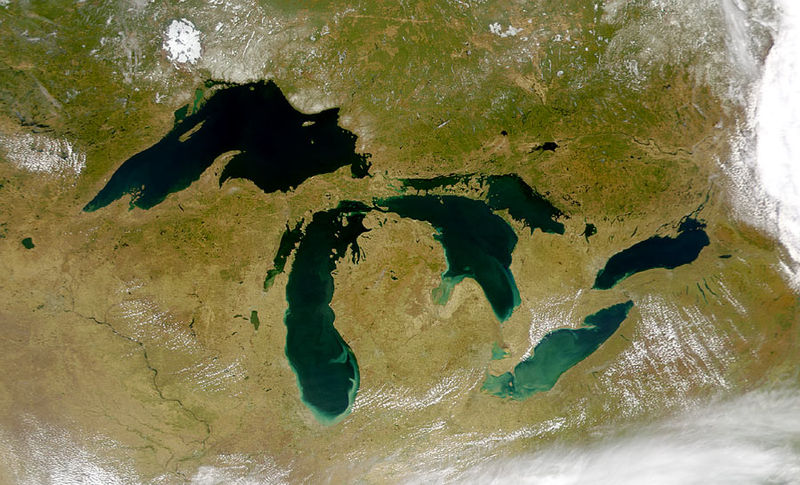Of all the potential topics in North American water history, a broadly conceived study of the Great Lakes is well overdue. Although there are now several books analyzing contemporary water policy and pollution in the region, few have ventured to consider the changing patterns of human-lake interaction over the long term. On January 22, 2009, Lynne Heasley, an associate professor of environmental studies and history at Western Michigan University, reported on an emerging research program on the environmental history of the Great Lakes region to the Nature/History/Society group at the University of British Columbia. Her study is ambitiously transnational in scope and design. Although she remains in the preliminary stages of this work, interested readers should seek out her article, “Recentering North American Environmental History” co-authored with James Feldman, published in Environmental History in 2007.
The view from a NASA satellite (2004)
[Provided by the SeaWiFS Project, NASA/Goddard Space Flight Center, and ORBIMAGE, Wikimedia Commons]




